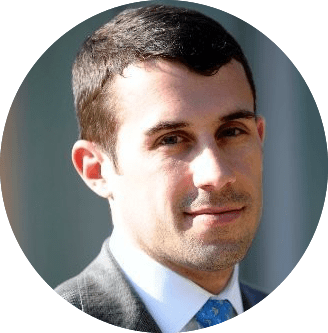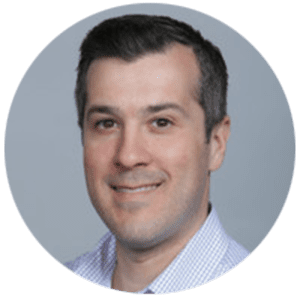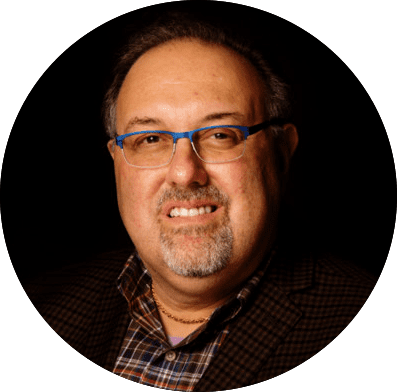Transcript
November DHC Virtual Summit 2020 - Live Content
The Role of the Future of the Marketer

Changes to "Required" Skill Set of Marketers
At the November 2020 DHC Virtual Summit hosted with BMS, we had the opportunity to bring together pharmaceutical executives to discuss and react to DHC Group research on the Role of the Marketer of the Future.
This research project was conducted with McKinsey and Company and shared by Brian Fox (Senior Partner) with attendees of the Virtual Summit. In addition to the full transcript of this dynamic conversation provided below, you can view the on-demand presentation and panel video.
The Panel Focused On:
- Emerging macro industry trends and the resulting impact on customers
- Changes to the perceived “required” skill set of marketers and marketing leadership
- Investments that leading marketers are making to bring more agility and innovation to their organizations
TRANSCRIPT
Originally recorded on November 19th as a part of the DHC Virtual Summit hosted with BMS. Please note, all opinions expressed here are the personal opinions of the panelists and do not represent an official position by their employer. This transcript has been lightly edited for readability.

BRIAN FOX
Senior Partner
Mckinsey & company
“Focusing on macro trends in the industry and the impact that they have on customers: what’s changing for our customers and what does that mean for marketers and where is that going in the future?”

DAN GANDOR
Director, US Customer Experience, Oncology & Virology
Abbvie
“Thank you for the opportunity to be part of this panel. Really excited to be here with Tricia, Jay, and yourself, Brian. To answer the question, it doesn’t take a brain surgeon to figure out that the world has really changed. We’re home a lot more. We’re doing things remote a lot more. There’s a lot more digital. With that, I think humans, customers, be it healthcare professionals or not, have had to have more flexibility, more agility in their lives than ever before. With those changes I think comes new and reset customer expectations.
At AbbVie, we have had to adjust to create much more remote detailing, remote interaction capabilities, much more self-service and digital elements for our customers. It just comes down to the fact that we’re all living day in and day out – I’m at the office today. There’s new governor orders in Illinois. I don’t know if I’m going to be here tomorrow or if I’m going to be back at home. Every day, I have to pack my full backpack and be ready to go wherever that may be. Sometimes I’m in my office at home and the kids are doing their homeschooling. If they’re loud, I may have to run to the basement. The world is changing more rapidly and my micro world is changing more rapidly than I feel it ever has before. We as marketers need to be prepared to adjust to that changing environment more.”

BRIAN FOX
Senior Partner
Mckinsey & company

JAY APPEL
EXECUTIVE DIRECTOR, WORLDWIDE DIGITAL MARKETING HUB
BRISTOL-MYERS SQUIBB
The difference between physician and patient relationship has changed dramatically. Look at the emergence of teleheath. It’s been waiting for its time over these last number of years. It’s finally hit its stride. Again, will there be as much utilization of telehealth when we come out of the other side of this? It might flatten out quite a bit. This is definitely a model that we need to be aware of in terms of how physicians and patients are engaging with one another. It changes the way that we might engage with patients and physicians as patients no longer want to spend as much time in the physician’s office in a lot of cases as they have been used to. What does that implicate in terms of how we market to both of those audiences? It does have some dramatic impact on our organization.”

BRIAN FOX
Senior Partner
Mckinsey & company

TRICIA BROWN
CORPORATE STRATEGY, ENTERPRISE INSIDER RISK PROGRAM
MERCK
I think it’s changing a whole lot but the best that we could do is, as marketers, listen to that and then work very quickly and agilely to respond to that. We’ve seen great things in the news by many of our companies on the work that we’re doing so much quicker than usual and how we are accomplishing that. What can we bottle from that experience so that we can incorporate that into all of our cultures and move that forward? It’s really the listening and responding.”

BRIAN FOX
Senior Partner
Mckinsey & company

JAY APPEL
EXECUTIVE DIRECTOR, WORLDWIDE DIGITAL MARKETING HUB
BRISTOL-MYERS SQUIBB
As someone who’s probably got a little bit too much gray hair in this particular field, we’ve been pushing this boulder uphill for, I don’t want to say how many years, but as many as it’s taken to grow these gray hairs. Now is the time finally where organizations are starting to see that we’ve been talking about it, now it’s time to actually act upon it with regards to our sophistication in that data and analytics universe.
The other thing that is critical from innovation standpoint is to remember every marketer has a job they have to do today and we need to make sure they can continue to be focused on the task at hand. The importance of investing in some separate focused areas for test and learn opportunities in the marketing space becomes even that much more important because if everybody gets distracted by knowing ‘we all need to run after those ideas’. Everybody that’s listening to this call, we’re all being tasked with finding new ways to engage with our customers. At the same time, we have a business to run. What happens is often you’ll get distracted if you try to do one of these test and learn ideas really well, you still have the job at hand.
It’s really important that organizations are starting to invest in those focused areas where you can do appropriate minimum viable product, test and learn, outside of the day to day work of the business in order to grow and understand what those future capabilities need to be. They’ll never get to scale if you leave it to the generalist marketer who, again, has a huge task at hand.”

DAN GANDOR
Director, US Customer Experience, Oncology & Virology
Abbvie
If anything, it highlights where our traditional marketers don’t have the skillsets to understand how to use data and analytics properly, how to even understand what are the digital channels and capabilities that need to be in place to take advantage of this new world. Especially in recognizing that more interactions are occurring in the digital channels, in the virtual remote channels. Our organization recognizes you need more customer experience personnel, people who can really put the customer at the center of everything they do and then combine it with the digital analytics. At least here, that’s what we call CX. I think those are some trends and investments that we’re making and I’m seeing.”

TRICIA BROWN
CORPORATE STRATEGY, ENTERPRISE INSIDER RISK PROGRAM
MERCK

BRIAN FOX
Senior Partner
Mckinsey & company

JAY APPEL
EXECUTIVE DIRECTOR, WORLDWIDE DIGITAL MARKETING HUB
BRISTOL-MYERS SQUIBB
I think there’s become an even more tightly integrated relationship between these organizations as a result of the last number of months, because there is such a need back and forth between what we call sales and marketing. Because at the end of the day, going back to being customer centric, if a customer wants to have a discussion in the field, then that’s available to them.
We also need to recognize that some customers might want to spend more time getting what they need from more of a self-service experience. Now the key question is how do you tie those two experiences together to create a seamless customer experience. I think about when I go into the doctor and I have to repeat my history with every single doctor every time I go in, so I’m starting a new relationship every time.
Think about what our customers can experience. They can have a relationship with us through our website and some of our third party partners, have a separate relationship with our sales force, and the two never really come together so you’re almost starting that relationship over with the brand and with the organization every time you come in and out of that ecosystem. Being able to more tightly integrate that experience is going to become more and more important as we see our customers utilizing these tools more frequently.”

BRIAN FOX
Senior Partner
Mckinsey & company

TRICIA BROWN
CORPORATE STRATEGY, ENTERPRISE INSIDER RISK PROGRAM
MERCK
You mentioned content, Brian, we worked a lot on that. That’s been like the forgotten child for a long time. We were quickly able to see what we had been sending out for years based on traditional market research really wasn’t working. Let’s be nimble. We can all say, ‘oh, that’s horrible’, but we can quickly respond to that and so we saw dramatic improvement in customer experience, and then quickly after that, business result. Within five months, our organization decided to scale, and now for 18 months or so, we have been up to scale using Agile. That is really exciting, but it’s remained really a focus for marketing and so what we’re now trying to do is say every aspect of the organization has to change as well.
We’ve learned you can only do so much but if your research group doesn’t follow it and they can’t get you what you need to respond to the customer or it takes too long, that’s a problem. If we don’t have leaders that understand that they have to lead very differently to empower these teams and help them to speed things up and remove barriers, that’s also a problem. As we’re starting to work across the company in this way, we’re seeing that the leadership piece is so critical. That’s a piece that I think is still a gap that we need to make advancements on.”

DAN GANDOR
Director, US Customer Experience, Oncology & Virology
Abbvie
Most notably, we already talked about this, but having sales and marketing be able to translate and talk to each other and understand how it’s truly a synergistic relationship. Instead of just sales first with marketing all around it, but truly one in the same or equals or actually in some ways thinking about sales as just one channel in an omnichannel ecosystem. Those are some big fundamental differences I’ve seen accelerated with COVID but there’s still fundamental gaps there. Teams like ours in customer experience are trying to bridge those gaps and serve as an orchestra conductor but we can only go so far and so deep because of our still fairly limited size.”

JAY APPEL
EXECUTIVE DIRECTOR, WORLDWIDE DIGITAL MARKETING HUB
BRISTOL-MYERS SQUIBB
Those trends will change overtime, and obviously, when we come out the other end of this, there will be another rebalancing. It has become more important than ever to bring that dataset into one view to help the organizations see this more holistically than us each going into our own organizations and showing what best to do with the channels that we own.”

BRIAN FOX
Senior Partner
Mckinsey & company

TRICIA BROWN
CORPORATE STRATEGY, ENTERPRISE INSIDER RISK PROGRAM
MERCK
“I can’t even begin to tell you what a difference it makes for employee engagement and culture as well as a more tangible results and customer experience and business results. When people come into this group and understand, even to the earlier point about sales and marketing, you get them together and marketing will say, ‘look, we heard you. This is what we’re cooking up. Do you think this is going to work with customer base or not? Let’s test it.’
The next real a-ha was we could get our organization to do the test and learn that I had struggled with for years because people in the past had always looked at it as ‘this is a really firm decision. We’re going to be stuck with this decision. We don’t know the risk associated it’. You’re able to negotiate with leaders in legal and privacy and regulatory and all other saying, ‘look, this is a two week test. The risk is very low. Let’s just do this. We’ll all have eyes on it. We’ll see how it goes’. Things started to work in a very different way and then the anxieties that other leaders had outside of marketing decreased. They felt more in control. They felt more ownership of the actual results.
Another big a-ha is a common goal. All of these cross functions had a common goal and they were going to get success or not together and that’s very different from saying ‘my goal is market share’ and ‘my goal is no letters from the FDA’. It’s very different. We’re sharing a different goal together. I also learned firsthand that we were a company about perfection and we would rather get out a glossy campaign that had all tactics but they were all pretty much similar. They were not following our mantra of right message, right channel, right time. Through this, we learned that we could do it 80% good and test and learn and that made a huge difference, not just on the work we were doing, but that started to filter out to the rest of the organization and to the leadership.
It’s the right approach. We didn’t know this a couple years ago. We were saying ‘Do we put our toe in?. We are really believing in this’. Again, it goes back to our customers want speed. They want to have their needs addressed. They don’t want the consistent messaging every time they connect with you. They want it to be authentic. Agile is just a tool but it’s helping us with our customer connection and it’s also helping us with our culture.”

BRIAN FOX
Senior Partner
Mckinsey & company
Maybe with that as context, the title of this panel is ‘Marketer of the Future’, that’s how we’re starting today. How would each of you describe your vision for the ultimate marketer of the future? What can people do today to put themselves on the trajectory to be that ultimate marketer of the future?”

TRICIA BROWN
CORPORATE STRATEGY, ENTERPRISE INSIDER RISK PROGRAM
MERCK
Risk is critical. I would say through the course of my career, when you can take a risk and try a new area, when you can get perspective in different divisions that are working on business problems that are related to marketing, they’re going to give you fresh perspective. They’re going to give you new skills and tools that you can use and add to your armamentarium.
It’s critical to get the outside perspective. We always talk about that but very few of us take the time to do it. It could be a networking forum like the DHC is bringing us today. Dring this time period, I don’t have a long commute anymore. I’m trying to invest more in listening to podcasts and things not necessarily even related to my role. Because it helps you think more broadly about what the world is going through and asking ‘how can I use that to become not just a better marketer but a better person and a better marketing leader?’.
That’s the last piece of this. The leadership, someone said this today, is so much more important than it ever was. We need to understand diversity. We need to encourage inclusion. We need to be compassionate people for our direct reports and our colleagues. We need to model what a good leader is so that we can bring our teams through these tough times and show resiliency and actually thrive from that.”

JAY APPEL
EXECUTIVE DIRECTOR, WORLDWIDE DIGITAL MARKETING HUB
BRISTOL-MYERS SQUIBB
Again, I understand why it hasn’t necessarily been a key stop but if you’re not seeing this year being the year to differentiate yourself as you move through an organization and this being the right stop to have that experience, it could be a preceptorship, it doesn’t have to be something that’s permanent. I’d rather it be permanent. Organizations need to really look at these types of groups more so than they have in the past in terms of a requirement for being able to lead these functions. We talk about integrated. We’re part of that team. In order to lead that team, having that experience would help. I would hope that a 2025 marketer maybe came from a little bit of a different path than some of our traditional marketers have come across the industry.”

DAN GANDOR
Director, US Customer Experience, Oncology & Virology
Abbvie
Now, we need to realize there’s plenty of marketers who grew up in the pharma ivory tower or grew up in the sales vertical, and therefore, they think they have a customer centricity, but they really don’t. Yes, you have to have the fundamentals and the technical skills, which are more digital than ever before and more integrated than ever before, but the other element that’s going to be needed for successful pharma marketers is having that customer centric focus and the ability to do that orchestration or facilitation across the different functions.
To Jay’s point, teams like ours, are a great breeding ground for folks who can successfully do that. I would love to see more folks come through our shop because, one, it will build those technical skills automatically and force you to work in that cross functional, orchestrator, aligner, facilitator way. I think it checks a lot of those boxes and sets folks up for success in the future.”

